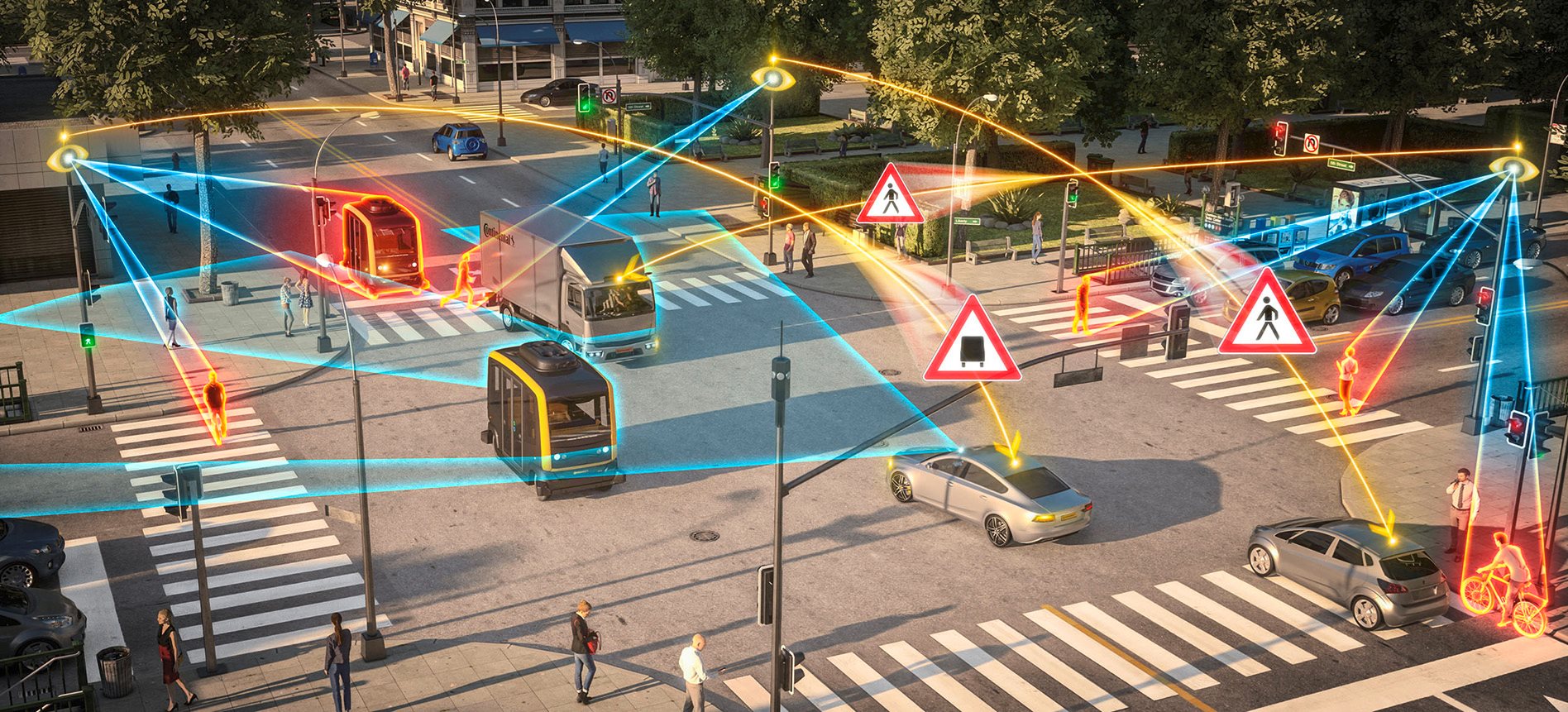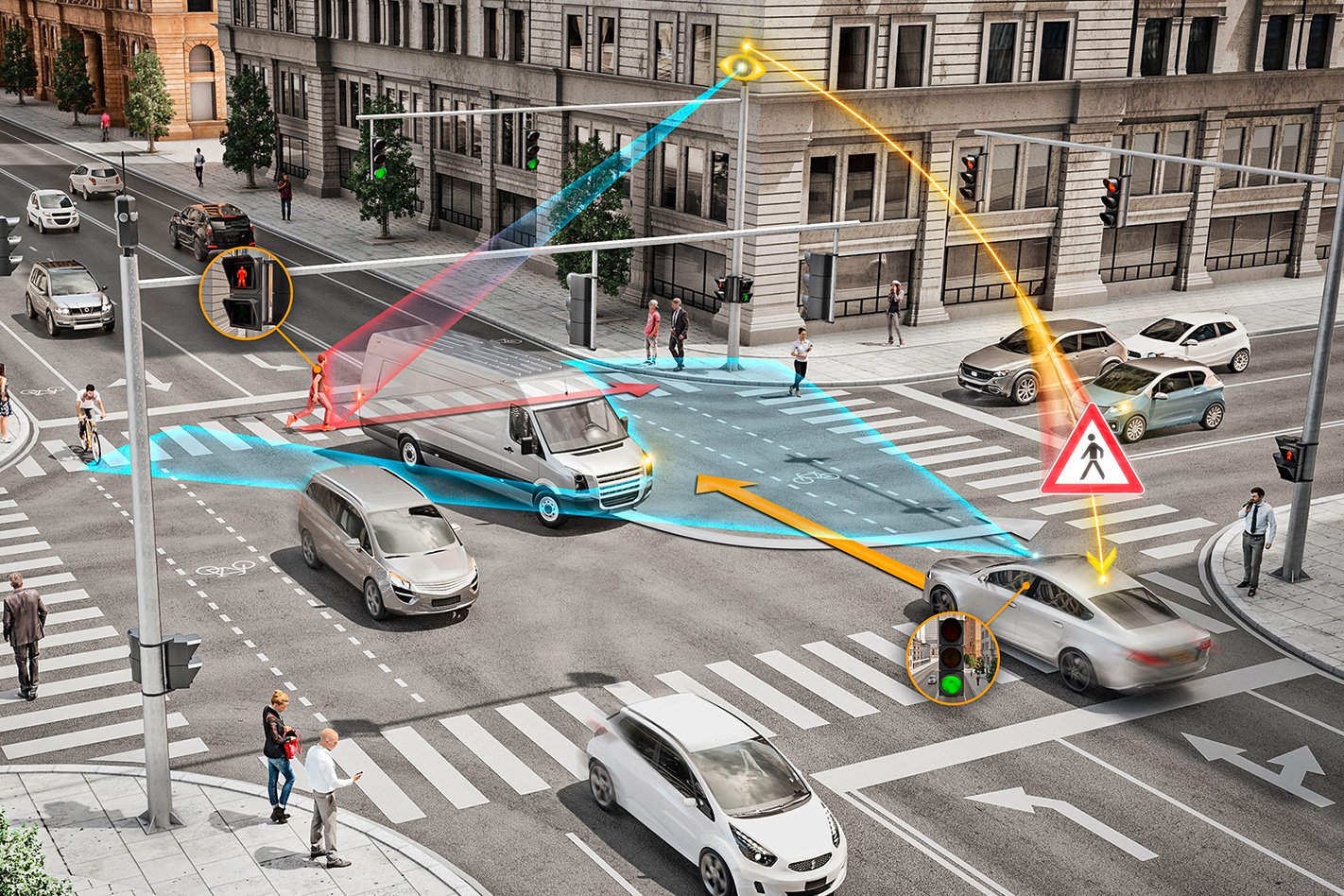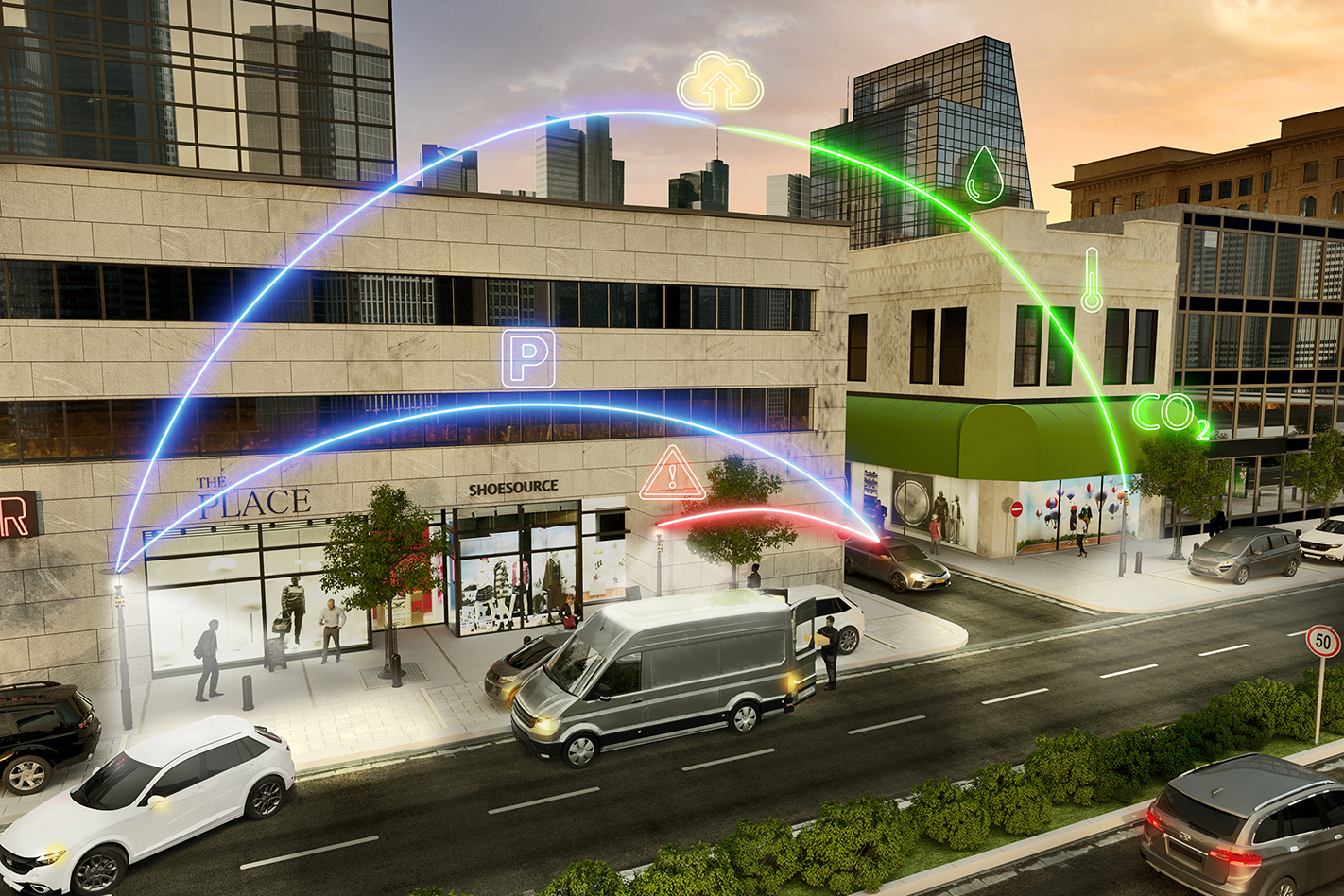
Internet-connected, “smart” streetlamps and intersections are being touted as the next big thing in the world of automotive technology, but while they would arguably be a major benefit to road safety and driver convenience, such systems could also create a blanket of speed cameras.
The concept of networked road infrastructure isn’t new, and in many cities the lights and built-in sensors of most intersections are already monitored remotely. The next step, however, is to add more sensors into the mix to keep tabs on the precise positions of cars and pedestrians, while beaming out that information to any cars in the immediate area.
It’s a noble idea. Say, for example, that there’s a pedestrian about to cross the road in front of you but is obscured by a truck in the next lane (below). Such a system could give you advance warning – or automatically slam on the anchors – before the situation becomes life-threatening. Accidentally running a red light could also become a thing of the past too, as your car would be alerted if it’s in danger of crossing a stoplight, while the extra data generated would be critical to making autonomous vehicles function both efficiently, and safely.

That safety-critical information would be sent directly to cars in the vicinity through the Direct Short Range Communications protocol, rather than via a cloud server over the internet. With ultra-low transmission times, DSRC is a better choice for that kind of vehicle-to-infrastructure information transfer.
The benefits don’t stop there. More intelligent vehicle monitoring would allow traffic light sequences to respond to changes in traffic flow, easing congestion and reducing the amount of time wasted by sitting still at intersections. With each junction connected via the internet, slow-moving traffic jams could be cleared far more efficiently by phasing traffic light cycles sympathetically.
That said, safety is the main driver behind the smart intersection idea. Continental, which showcased its latest vision for digitally-enhanced street infrastructure at the Continental TechShow earlier this month, says its aim is to use its sensor technology to reduce the number of crashes globally. With 40 percent of road crashes in the United States occurring at intersections, Continental says it makes sense to start its smart infrastructure efforts there.
Meanwhile, sensor modules strapped to ordinary lamp posts – Continental’s “Intelligent Street Lamp” concept, below – holds the potential to stretch the digitisation of the road network well beyond illuminated intersections. Besides informing nearby intersections of approaching traffic, the street lamp modules would also be able to monitor parking spaces and direct nearby cars to vacant spots. They could even survey air and noise quality, uploading that information to the cloud. If there’s a hazard on the road, such as a fallen tree or vehicle accident, they could alert approacing cars via the DSRC protocol.
However, even Continental admits that the sensor technology could be adapted to other purposes, such as extending the reach of speed enforcement well beyond main roads.

“Absolutely,” Continental business development manager Christian Gietl confirmed.
“It depends on the country. I cannot make that general statement, because it’s really specific, but every market has its requirement. If you look at how speeding, for example, is solved today by radar technology, this is the technology that we’re implementing here in our sensor, so what is possible today can be done in future done by a street lamp-mounted sensor.”
But that’s not to say that Continental’s system will automatically fine those creeping above the speed limit wherever it’s installed. In fact, data protection laws in Europe mean that kind of surveillance is be expressly forbidden.
“Of course, everything we’re doing here [in Europe] is GDPR (General Data Protection Regulation) compliant – it’s about taking good care of an individual’s personal information. We solve that by not transmitting any personal data at all, like a licence plate.”
There are, however, no such data protection laws in Australia. According to Continental, if the client city or state wants the ability to use its smart streetlights for speed enforcement, it has the technological means to do so. Cost, however, may be the only obstacle to putting that tech on every street.
“If you look at more advanced systems like combining camera and radar, which means detecting over-speeding through license plate recognition at the same time and automatically fining those people, that is a use case that today is probably only happening in the Chinese market right now – but we’ll see how the market develops.”
In many Chinese cities citizens can be detected by CCTV cameras and identified via facial recognition, with an AI system automatically fining those detected breaking the law by, for example, jaywalking – an extension of that government’s mass surveillance program and a precursor to its infamous “social credit” system.
“The concept we have here is a modular concept, where a city can really address their specific ‘pain points’ – which are very individual”.
“For example, the US is using gunshot recognition on street lamps, so microphones on streetlamps can hear a gunshot, and through triangulation you can know where the gun was fired. At the same time the waveform is analysed and you can know which kind of gun it was.”
While Australia doesn’t have the same issue with gun crime or the draconian AI-driven ‘social credit’ system of China, the prospect of putting a speed camera in every street may prove to be an attractive idea to police and councils eager to clamp down further on speeding motorists – while also eventually delivering the safety benefits touted by Continental as cars become increasingly connected.



